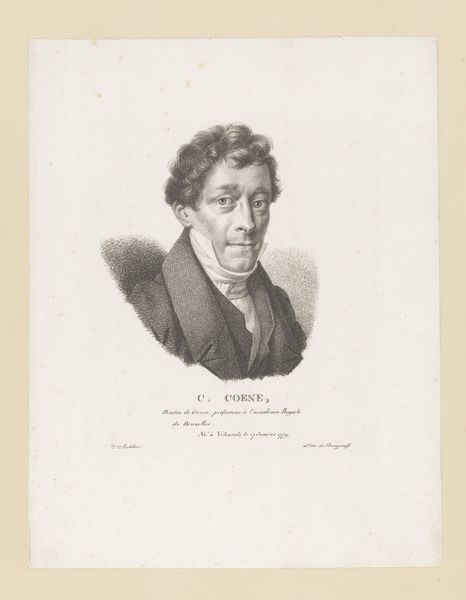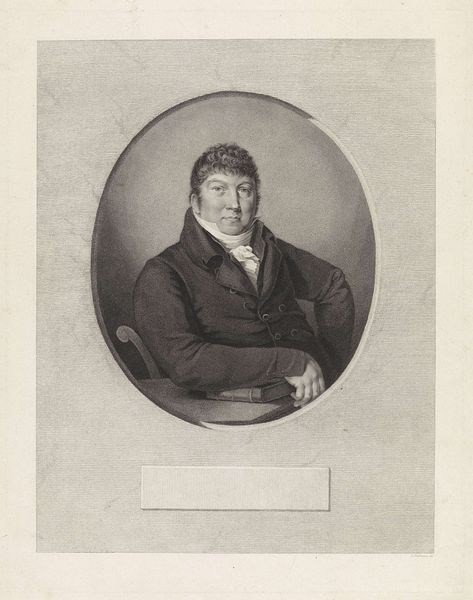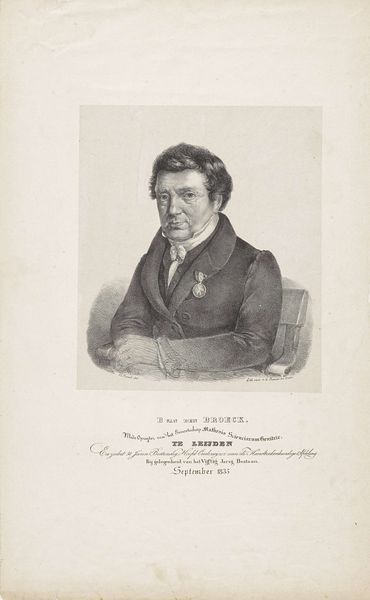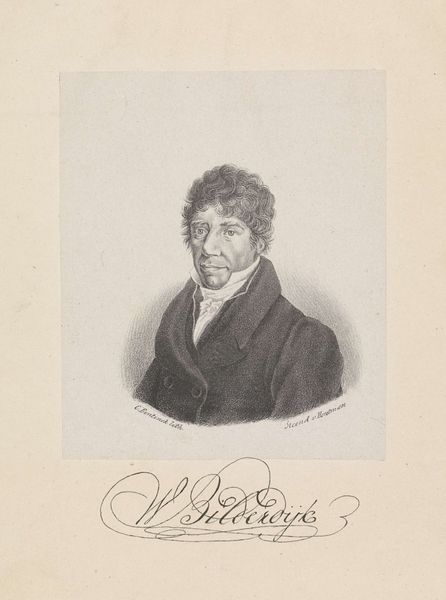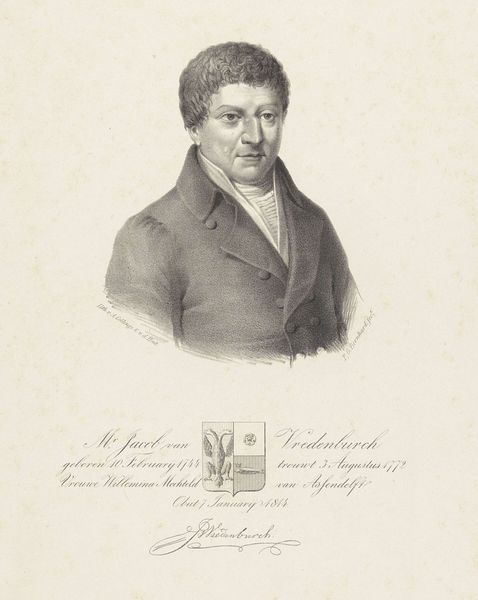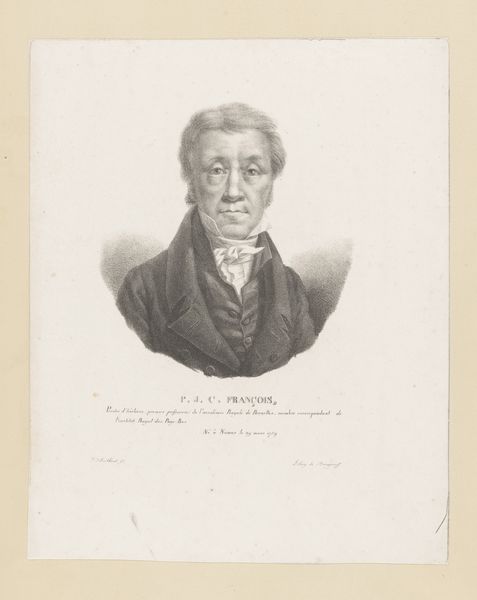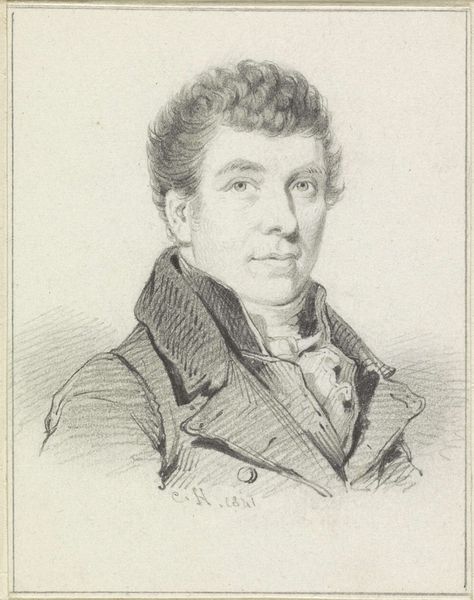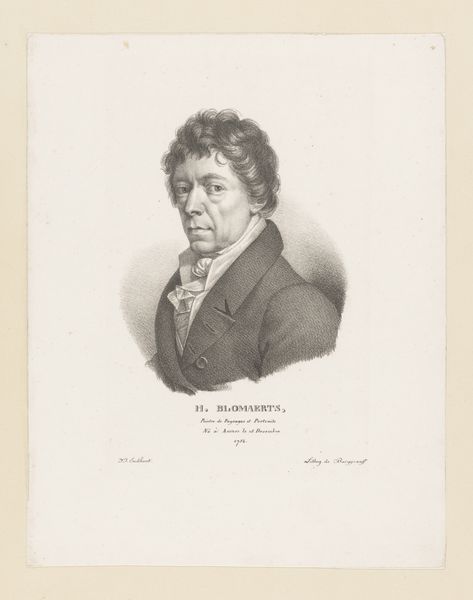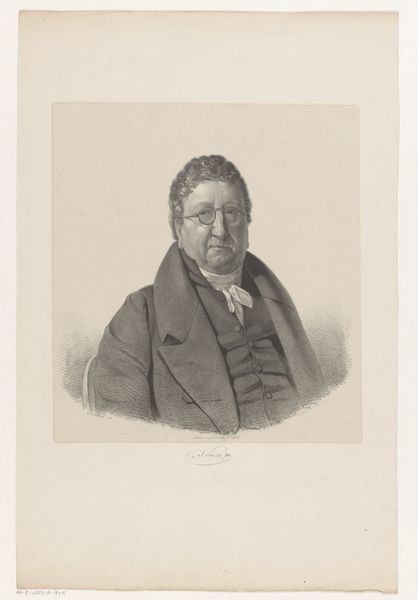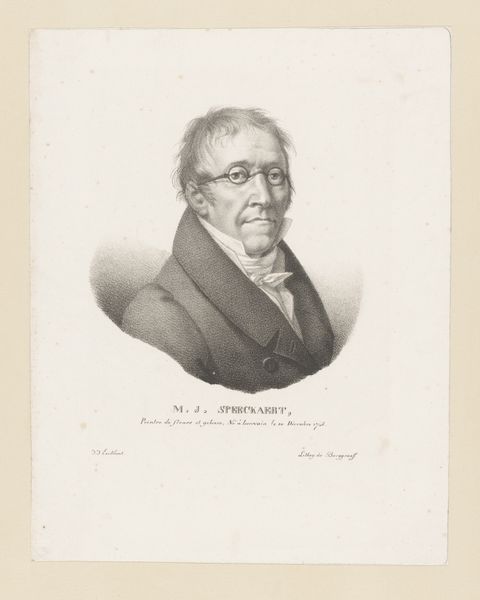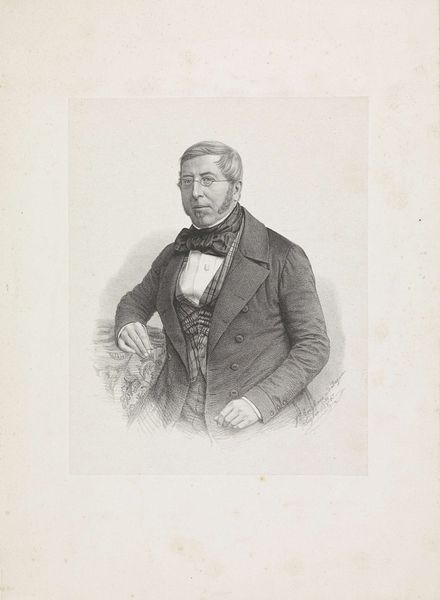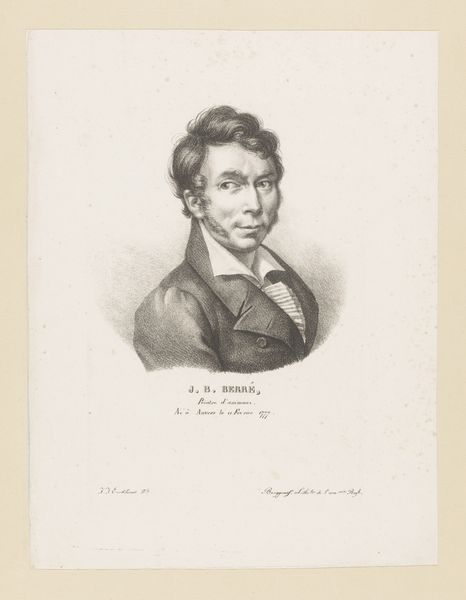
drawing, pencil
#
portrait
#
pencil drawn
#
drawing
#
pencil sketch
#
charcoal drawing
#
pencil drawing
#
romanticism
#
pencil
#
line
#
academic-art
#
realism
Dimensions: height 488 mm, width 299 mm
Copyright: Rijks Museum: Open Domain
This is a portrait of B. van den Broek, made by Jacobus Ludovicus Cornet in September 1833. It’s made using lithography, a printmaking technique that relies on the resistance between grease and water. The process begins with a smooth stone, traditionally limestone, upon which the artist draws an image using a greasy crayon or ink. The stone is then treated with a chemical etch, making the drawn areas receptive to oil-based inks and the undrawn areas receptive to water. In printing, the stone is dampened, and then inked. The ink adheres only to the drawn areas. Paper is then pressed against the stone, transferring the image. The resulting print captures the texture and tonality of the original drawing, allowing for nuanced shading and fine details like those we see here in the sitter's face and clothing. Lithography emerged in the early 19th century as a relatively inexpensive method for mass-producing images, and has an impact on the dissemination of art and information. By understanding the materials and processes behind this print, we appreciate the artist's skill, and the broader context of its making.
Comments
No comments
Be the first to comment and join the conversation on the ultimate creative platform.
